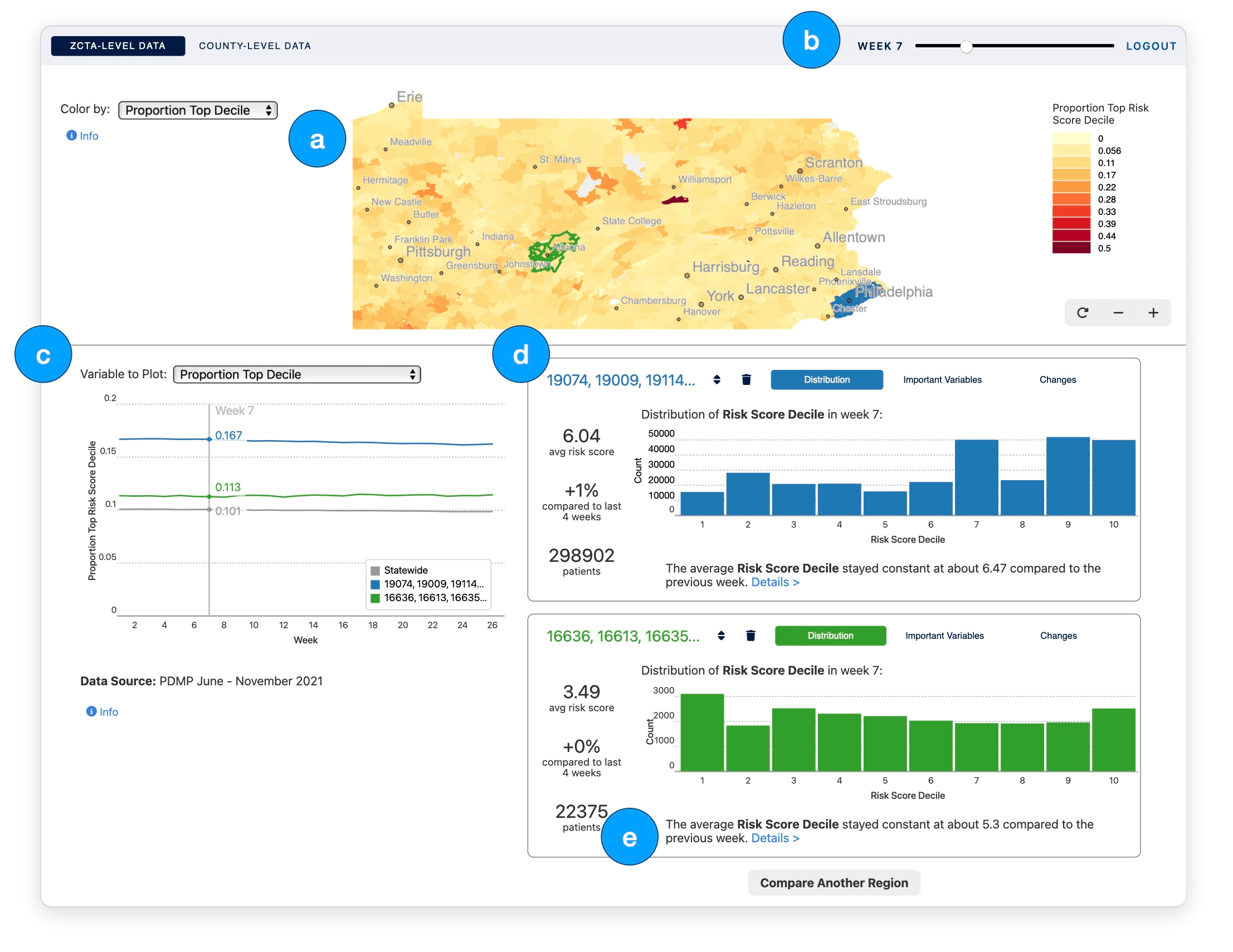Static Algorithm, Evolving Epidemic: Understanding the Potential of Human-AI Risk Assessment to Support Regional Overdose Prevention
Yejun Kwak
Courtney Kuza
Qingnan Yang
Kayleigh Adamson
Katie Suda
Lu Tang
Walid Gellad
Published at
CSCW
| Bergen, Norway
2025

Abstract
Drug overdose deaths, including those due to prescription opioids, represent a critical public health issue in the United States and worldwide. Artificial intelligence (AI) approaches have been developed and deployed to help prescribers assess a patient's risk for overdose-related death, but it is unknown whether public health experts can leverage similar predictions to make local resource allocation decisions more effectively. In this work, we evaluated how AI-based overdose risk assessment could be used to inform local public health decisions using a working prototype system. Experts from three health departments, of varying locations and sizes with respect to staff and population served, were receptive to the potential benefits of algorithmic risk prediction and of using AI-augmented visualization to connect across data sources. However, they also expressed concerns about whether the risk prediction model's formulation and underlying data would match the state of the overdose epidemic as it evolved in their specific locations. Our findings extend those of other studies on algorithmic systems in the public sector, and they present opportunities for future human-AI collaborative tools to support decision-making in local, time-varying contexts.